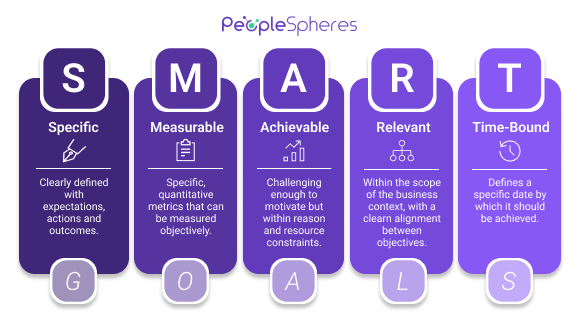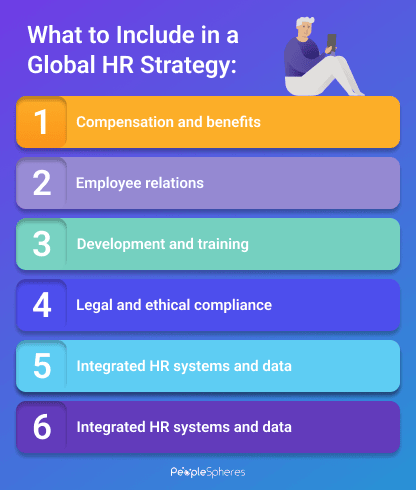
The HR function has come to have a crucial role in businesses. Being strategic about HR processes has become a top priority for CHROs. However, most struggle with developing a sustainable HR strategy. CHROs can use this guide to create an HR strategy that is aligned with their employees’ experiences and expectations.
The importance of HR has grown over the years. Not only are HR professionals expected to solve employees’ day-to-day issues regarding their pay slips and PTO balances, but they are also expected to act as business partners at a strategic level. For example, common strategic problems that HR managers face include meeting employee needs during economic downturns, recruiting and developing talent to close organizational skill gaps, and executing efficient resource planning.
Related articles:
5 Common HR Problems and How to Solve Them
Digital Leadership in HR: Transform your Management System
What is an HR Strategy?
The definition of HR strategy can be spelled out in many ways, and in fact, it has been by many HR industry thought leaders. To give you a better idea of what it means to manage HR with a strategic approach, we thought we’d share the definition of strategic HR management as defined by SHRM:
…a future-oriented process of developing and implementing HR programs that address and solve business problems and directly contribute to major long-term business objectives.
SHRM
In other words, HR strategy is the catalyst for strategic human resources management with which employees, HR managers, and business leaders can have a unified, long-term vision of the business goals.
A good HR strategy is one that gives you and your team a clear and effective plan for staying compliant, attracting top talent, onboarding new hires, training employees, and keeping them motivated.
What do you Need to Execute your HR Strategy?
Identify Key Issues
The first step is to pinpoint which HR problems you and your team will focus on solving. There are several areas where these issues can stem from but the top 5 HR issues that HR professionals struggle with are:
- Compensation management
- Issues concerning HR software
- Low productivity rates
- Recruitment issues
- Law and compliance issues
However, all HR issues are different depending on the business. Conduct a comprehensive HR audit to find issues that create obstacles in your processes.
Maybe your company is lacking the talent and skills it needs to operate effectively and you hope that your HR strategy will include techniques for increasing internal training and development, creating coaching opportunities for HR managers and leadership teams, or creating a strong employer brand to attract top talent in the market.
When it comes to HR challenges in international companies, there are more specific issues to consider when putting together your HR strategy. For example, a company that is recruiting and operating globally will have to take things like time differences, culture differences, and employment laws into consideration to administer a fair and compliant strategy at a global level.
You can’t improve your HR process efficiency if you don’t first take the time to audit the current state of your processes.
Set Goals and Objectives
To write your HR goals and objectives, use the SMART goal framework below:
Specific – the objective is clearly defined with expectations, actions and outcomes. In other words, the objective avoids vague language and uses action verbs.
Measurable – the objective should be based on results. There are specific, quantitative metrics that can be measured objectively.
Achievable – the objective is challenging enough to motivate the team to achieve but is in within reason and resource constraints. The outcome should be within the organization’s control.
Relevant – the objective is within the scope of the business context. There should be a clear alignment between the HR objectives and the objectives of the organization.
Time-Bound – the objective defines a specific date by which it should be achieved.

Align with Business Objectives
CHROs face a lot of pressure, especially in a dynamic business environment, to drive business success.
According to Gartner research, 66% of organizations identified the lack of integration with business needs among the top barriers to achieving effective strategy planning.
With this in mind, it is important that the SMART goal framework is also aligned to create business value. How?
First, you must get a solid understanding of your business goals and strategy. Once these goals are clearly defined, HR leaders can determine how to use resources and skills to achieve them. If there is a gap identified between the capabilities needed to achieve those goals and the current capabilities identified in the organization, HR leaders should develop a plan to close this gap.
Bridge the Gap with a Supporting Ecosystem
When you think of an ecosystem, technology, software, tools and apps are usually what come to mind. In a business context, the supporting ecosystem for your HR strategy is all the elements that will allow you to execute your strategy in the most effective manner. This includes putting in place the right HR policies, hiring the right people into your organization, and adopting the right HR technology and documentation methods to meet your specific business objectives and requirements.
Building a strong HR team is also essential to bring an HR strategy to life. It ensures alignment between business goals and people practices, while driving consistent execution across the organization. Without a capable team, even the best-designed strategy risks falling short in impact and results.
When establishing your supporting ecosystem with the goal of bridging the gap between current and future desired states, you need to think both globally and locally. This means that you need to take into consideration global business requirements while ensuring that location-specific or market-specific needs are met. This could be legal requirements, skill gaps, cultural differences, industry complexities, etc. In a digital era, customizing employee experiences and processes is becoming easier to attain.
Optimize the Decision-Making Process
When you formulate your HR strategy, you will distribute it across the various HR managers to implement in their respective teams. But as you can imagine, their communication of the strategy and plan will be different than that of yours to them. To empower your HR professionals to contribute positively to the high-level objectives, you will need to provide them with a clear direction for HR decision making.
To optimize decision-making, one of the best practices is to make the information readily available and easily accessible. This is especially vital when there are multiple people or even departments involved in the decision-making process. We live in a data-dense environment, but most data is created and consumed in silos. That is why it’s important that the relevant information is put forward and is easy to retrieve when needed. Some organizations use HR software and dashboards to deliver key metrics and data.
Areas to Focus on in your HR Strategy
Where do you start when it comes to creating your HR strategy? What topics are HR leaders focusing on post-pandemic? We have found that a strategic HR agenda in this era often focuses on these key areas:
Talent Acquisition and Retention
There are several key trends surrounding talent acquisition that require deliberate consideration from HR leaders. They include the fact that the Great Resignation has left companies struggling with consistently high turnover rates in the job market. This goes hand-in-hand with the need to offer more purpose-driven employee experiences as people’s demands and expectations from their employers increase.
Building a strong employer brand has become a central part of any HR strategy. Not only are employees demanding value and purpose from the companies they work for, but they are also demanding it in both their personal and work life. This requires HR leaders to think about a more human-centric way of working such as adopting hybrid work models and providing flexibility and autonomy to achieve business goals.
Employee Engagement
Engaged employees are crucial for many reasons. For one, employees that are engaged in the company take more responsibility and put more effort into their job. As a result of this, you can expect your products or services to increase in quality, higher customer satisfaction, improved profits, and high return in shareholder stakes.
To increase your employee engagement, it is necessary to use efficient employee engagement strategies. When developing your employee engagement strategy, consider including objectives such as showing employees value to the company, mentoring and regular feedback, the effectiveness of first-line management, optimizing your team climate, and improving internal communication.
HR Tools
When it comes to enhancing human resource management by streamlining tasks and improving efficiency hr tools play an extremely significant role. HR tools includes a variety of tools such as HR analytics, self-service portals, communication tools, performance feedback platforms, and learning and development platforms.
The abudnace of HR tools on the market calls for a cohesive approach to managing HR vendors. By consolidating the management and engagement of vendors under a single strategy, organizations stand to gain significantly.
This approach not only enhances regulatory compliance and operational efficiency but also leads to substantial cost reductions. In the subsequent parts of this article, we will examine the issues arising from a disjointed HR vendor management approach and discuss how adopting a consolidated strategy can provide concrete benefits to businesses.
The fact is that technology trends change and adapt to the ever-changing conditions of the workplace. Amid the continuous changes, CHROs are starting to resist the one-size-fits-all approach to HR technology. Instead, they are opting for flexibility.
Chances are that your HR strategy will adapt to regular learning and feedback that you receive from your employees. And your HR systems should reflect this agile way of continuous improvement. As you shape your HR strategy and consequently your employee experiences, consider adopting a flexible tech stack that allows you to quickly add best-of-breed technologies to your existing HR applications.
Diversity Equity and Inclusion (DEI)
As diversity grows within organizations, the employee experience becomes more and more varied. This results in equity and inclusion becoming key issues for many employers. One Gartner analysis finds that CEOs talk about issues of equity, fairness, and inclusion 658% more than they did back in 2018. This includes issues such as compensation, access to flexible work, and distribution of other financial resources across the organization’s employees.
Workforce Planning
We define workforce planning as the process of examining current workforce needs, forecasting future workforce needs based on business objectives, and proposing talent management initiatives to bridge the gap between the two.
As businesses are increasingly going through digital transformation, new skills, and technology there are needs to meet the demand for new ways of working. While larger organizations may have a dedicated workforce planning specialist, it is important that CHROs are involved in ensuring HR strategies take workforce implications into consideration. This is especially true in times of major organizational changes such as a merger and acquisition and seasonal staffing periods.
Organizational Development
Organizational development (OD) is a field that focuses on improving a company’s overall health and effectiveness through planned change. It involves assessing current practices and systems, identifying areas that need enhancement, and implementing solutions that boost efficiency, communication, and employee engagement. The aim is to create a more adaptive and resilient organization that can thrive in a dynamic business environment.
HR strategies are designed to recruit, retain, and develop the best talent. Organizational development complements this by ensuring that the workplace culture, systems, and structures support these goals. Together, OD and HR initiatives help align employee performance and development with the broader objectives of the organization, thereby driving success and growth.
HR Reporting
When it comes to achieving effective strategic planning,
58% of business leaders indicated that the lack of relevant metrics to track progress is holding them back
Gartner
A key part of your HR strategy is establishing the success measures early on. This includes communicating targets and milestones that need to be reached in order to achieve overall HR and business objectives. An important part of this is determining the right data sources and a plan for tracking various key indicators.
But there’s a catch: HR metrics alone provide limited insights. To track real business goals, you need to look at metrics in a more holistic manner. This means that HR data needs to be coupled with data from other departments such as finance, operations, quality, etc. to truly connect the dots and drive meaningful insights regarding business success.
Artificial Intelligence
AI is no longer a futuristic concept. It’s a strategic imperative for HR leaders aiming to stay ahead of the curve. By weaving AI into your HR strategy, you unlock the power to make data-driven decisions at scale.
Imagine having real-time insights into employee engagement trends, predicting turnover before it happens, or identifying hidden skill gaps across your organization. These capabilities aren’t just nice-to-haves; they allow you to course-correct swiftly, align talent investments with growth objectives, and create a workplace that adapts as fast as your market does.
Start by defining clear business outcomes: do you want to shorten time-to-fill, boost internal mobility, or enhance leadership development? Then partner closely with IT and data teams to ensure your AI tools are grounded in clean, accessible data.
AI-driven business growth is made possible by empowering your workforce and cultivating a culture of continuous learning.
Global HR
If your business is operating internationally, global HR management will be an important area of your HR strategy. By diversifying your business processes, you enable the possibility to provide HR support on an international level. As you are approaching employees from different parts of the world, it is necessary to consider cultural differences and diversity. While the functionality of any HR management operation differs, globally integrating HR strategies needs to be done. Tips to consider when establishing your global HR strategy include:
- Effectively manage employee compensation and benefits
- Improve employee relations
- Optimize employee development and training
- Maintain legal and ethical compliance
- Integrate HR systems and data processing
- Simplify recruitment and onboarding

Common HR Strategy Mistakes and Keys to Success
Sloppy Recruiting: Rushing to Fill a Gap
Common productivity measures that are found in many HR strategies is cost-to-hire and time-to-hire. There is also an immense amount of pressure to back fill critical roles when turnover occurs. This could lead recruiting teams to rush to fill open positions as fast as possible. Rushing the recruitment process can mean overlooking warning signs of a bad hire.
Solution: You can substantially cut the time and resources needed to select the right candidate by laying out the foundation and preparing hiring teams for a successful selection process.
This is where the creation of an HR strategy can come into play. Your strategy should include clearly defined criteria for making a strategic hire. In other words, there should be a pre-established screening process, policies, and procedures that can be followed to fill a role. Succession planning is also a fundamental part of an overarching HR strategy. This way, when a critical role becomes vacant, your team is not scrambling to fill it. Plus the recruiting process is less prone to mistakes.
Outdated Policies and Employee Handbook
Employee handbooks are usually handed to new hires when they first come onboard. This informs them of the company rules and policies and serves as a protection against potential labor disputes. But rules and legal requirements change, especially as companies grow. A good HR professional stays up to date to all employment regulation changes and communicates them to relevant parties. But who is updating the handbook?
Solution: Don’t make legal compliance an afterthought. Instead, integrate it into your HR processes and strategy. Assign responsibility to all your HR functions to make sure that make necessary updates to your handbook and be in-the-know of changes that may affect it. Include HR risk management as part of this approach—identify potential compliance, operational, or reputational risks early and establish clear mitigation plans. In some cases, external HR experts and legal guidance are needed. So, ensure that these resources are planned for in your HR strategy as well.
A Rigid Organizational Structure
When trying to put a strategy in place in your organization, it is easy to want to be always in control of all elements. As we know, this is impossible in the dynamic business environment we work in today. Often this results in a rigid HR organizational structure. And this leads to functional silos in which the HR department is operating independently of other departments and very limited talent is being utilized cross-functionally.
Solution: What you need is a more personalized and flexible way of approaching diverse situations employees may face. This could mean implementing continuous feedback and improvement to your HR strategy. And structuring your organization in a modular model. This means each HR function operates with autonomy, able to adapt to changing trends and business requirements. This ensures that your organization stays human-centric yet flexible.




-1-640x380.jpg)
-640x380.jpg)